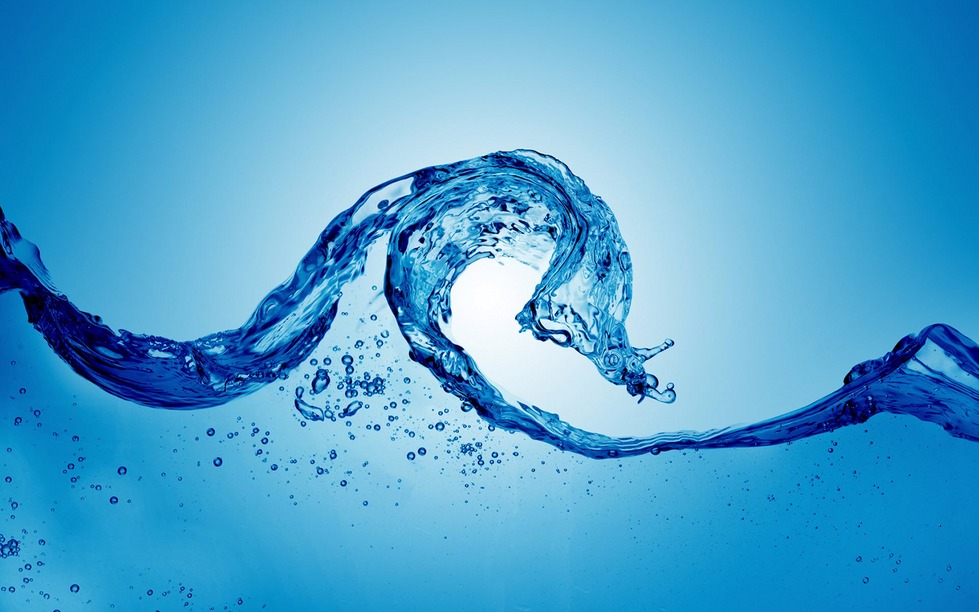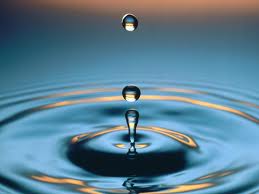WATER

Water is a chemical substance with the chemical formula H2O. A water molecule contains one oxygen and two hydrogen atoms connected by covalent bonds. Water is a liquid at ambient conditions, but it often co-exists on Earth with its solid state, ice, and gaseous state (water vapor or steam). Water also exists in a liquid crystal state near hydrophilic surfaces. Under nomenclature used to name chemical compounds, Dihydrogen monoxide is the scientific name for water, though it is almost never used.
Water covers 70.9% of the Earth's surface, and is vital for all known forms of life. On Earth, 96.5% of the planet's water is found mostly in oceans; 1.7% in groundwater; 1.7% in glaciers and the ice caps of Antarctica and Greenland; a small fraction in other large water bodies, and 0.001% in the air as vapor, clouds (formed of solid and liquid water particles suspended in air), and precipitation. Only 2.5% of the Earth's water is freshwater, and 98.8% of that water is in ice and groundwater. Less than 0.3% of all freshwater is in rivers, lakes, and the atmosphere, and an even smaller amount of the Earth's freshwater (0.003%) is contained within biological bodies and manufactured products.[6]Water on Earth moves continually through the hydrological cycle of evaporation and transpiration (evapotranspiration), condensation, precipitation, and runoff, usually reaching the sea. Evaporation and transpiration contribute to the precipitation over land.
Water covers 70.9% of the Earth's surface, and is vital for all known forms of life. On Earth, 96.5% of the planet's water is found mostly in oceans; 1.7% in groundwater; 1.7% in glaciers and the ice caps of Antarctica and Greenland; a small fraction in other large water bodies, and 0.001% in the air as vapor, clouds (formed of solid and liquid water particles suspended in air), and precipitation. Only 2.5% of the Earth's water is freshwater, and 98.8% of that water is in ice and groundwater. Less than 0.3% of all freshwater is in rivers, lakes, and the atmosphere, and an even smaller amount of the Earth's freshwater (0.003%) is contained within biological bodies and manufactured products.[6]Water on Earth moves continually through the hydrological cycle of evaporation and transpiration (evapotranspiration), condensation, precipitation, and runoff, usually reaching the sea. Evaporation and transpiration contribute to the precipitation over land.

